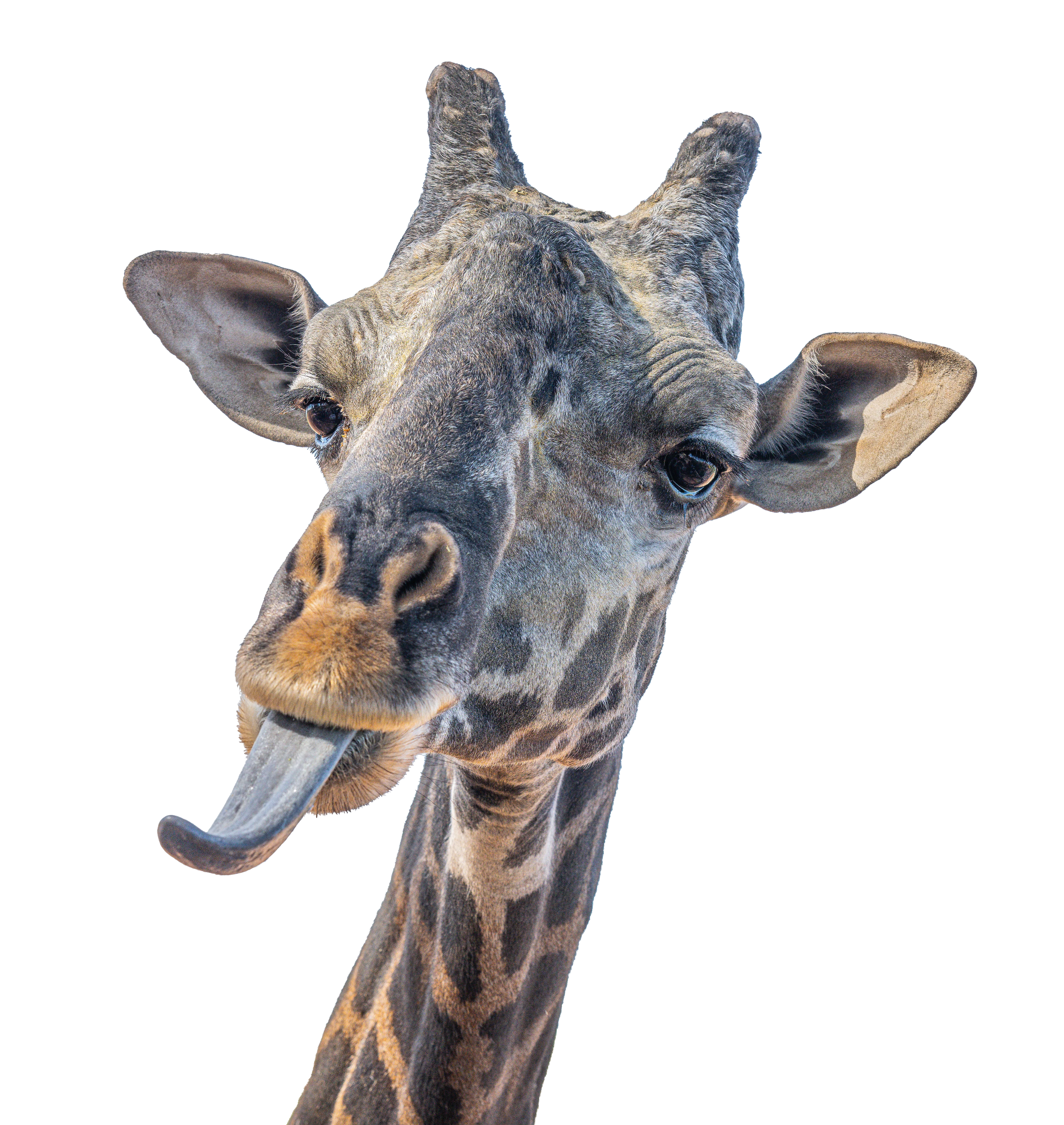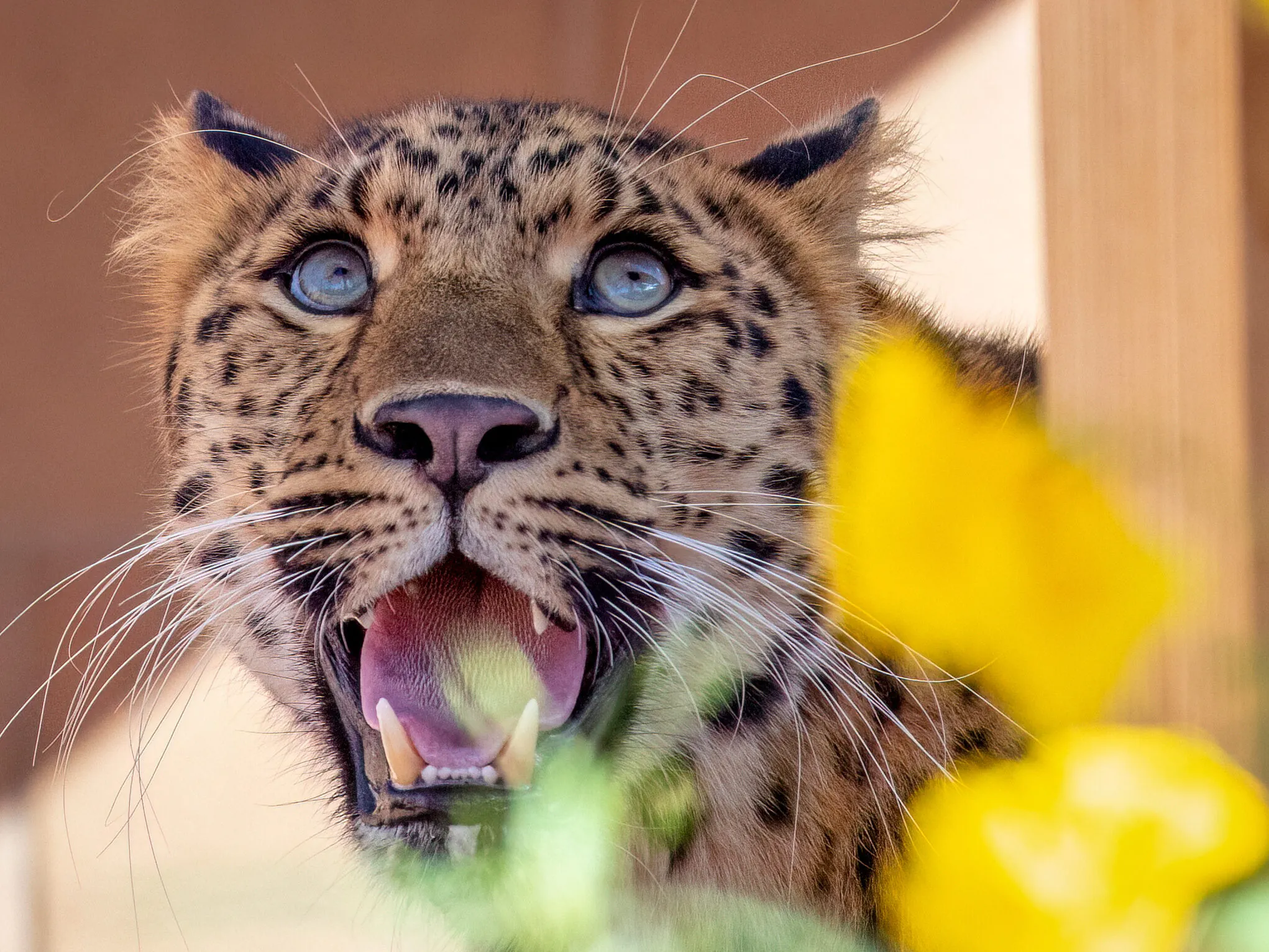toco toucan
ramphastos toco
My Huge Beak Doesn’t Weigh Me Down
The largest and most widespread of all toucans, toco toucans are easily identified by their huge orange-and-black colored beaks. Up to nine inches long, these beaks look heavy but are actually quite light. Made of a protein called keratin (like our fingernails), the inside of the beaks is structurally similar to a hard sponge.
Toucans use their beaks to repel predators and to grab hard-to-reach fruit. They can even be used for tasks that require high dexterity, like peeling fruit. By adjusting the amount of blood that flows to the beaks, toucans can cool down or warm up their bodies as needed. In order to sleep, toco toucans turn their heads around and rest their beaks on their backs. This position also helps reduce heat loss.
Fruit Please!
Toco toucans move seasonally from one region to another in search of their favorite food – fruit. They begin each day with visits to nearby fruit trees and bushes, then set off in a group to find new food sources. Though fruit makes up the bulk of their diet, they are also predators and will eat the occasional insect, small animal or bird egg. After grabbing a food item with their beaks, toucans flick their heads back and toss the food down their throat. They use their long, thin feather-like tongues to taste and manipulate food within their beaks.
I’m Not Known for My Flight Skills
Toco toucans spend most of their lives high in the rainforest canopy. Their large beaks make flight cumbersome, so they commonly travel by hopping from branch to branch. When they do fly, they flap their wings vigorously then glide, often in a straight line with other toucans.
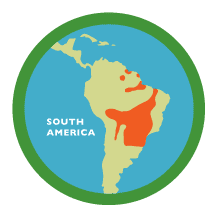
Diet: fruits, insects, birds, eggs, reptiles
Zoo Diet: hornbill fruit salad, protein supplement
Habitat: woodlands, grasslands, plantations
Weight: 17 – 30 oz

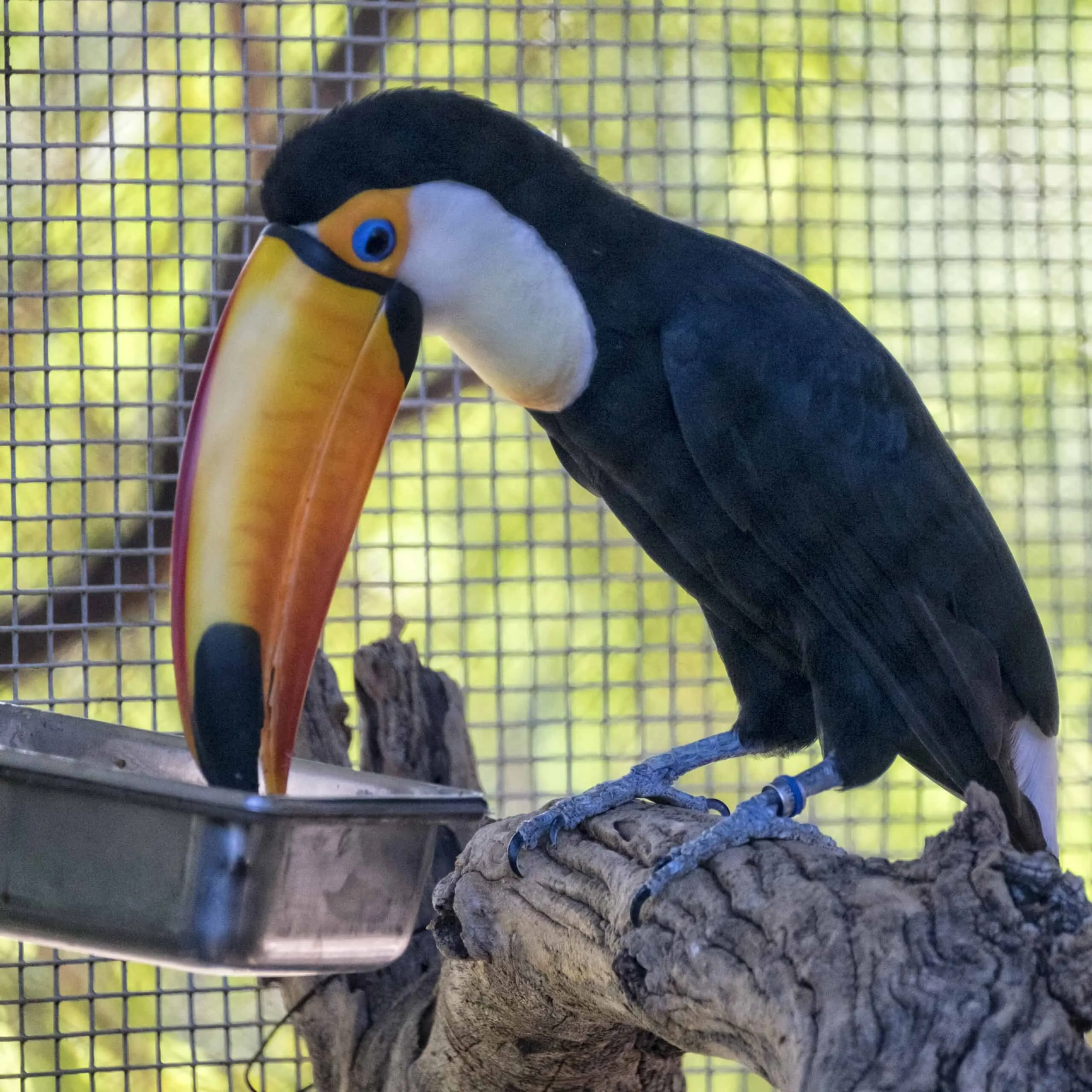
Plan your visit today!
The Phoenix Zoo is one of the largest non-profit zoos in the U.S., caring for over 3,000 animals, with nearly 400 species represented, including many threatened/endangered species.
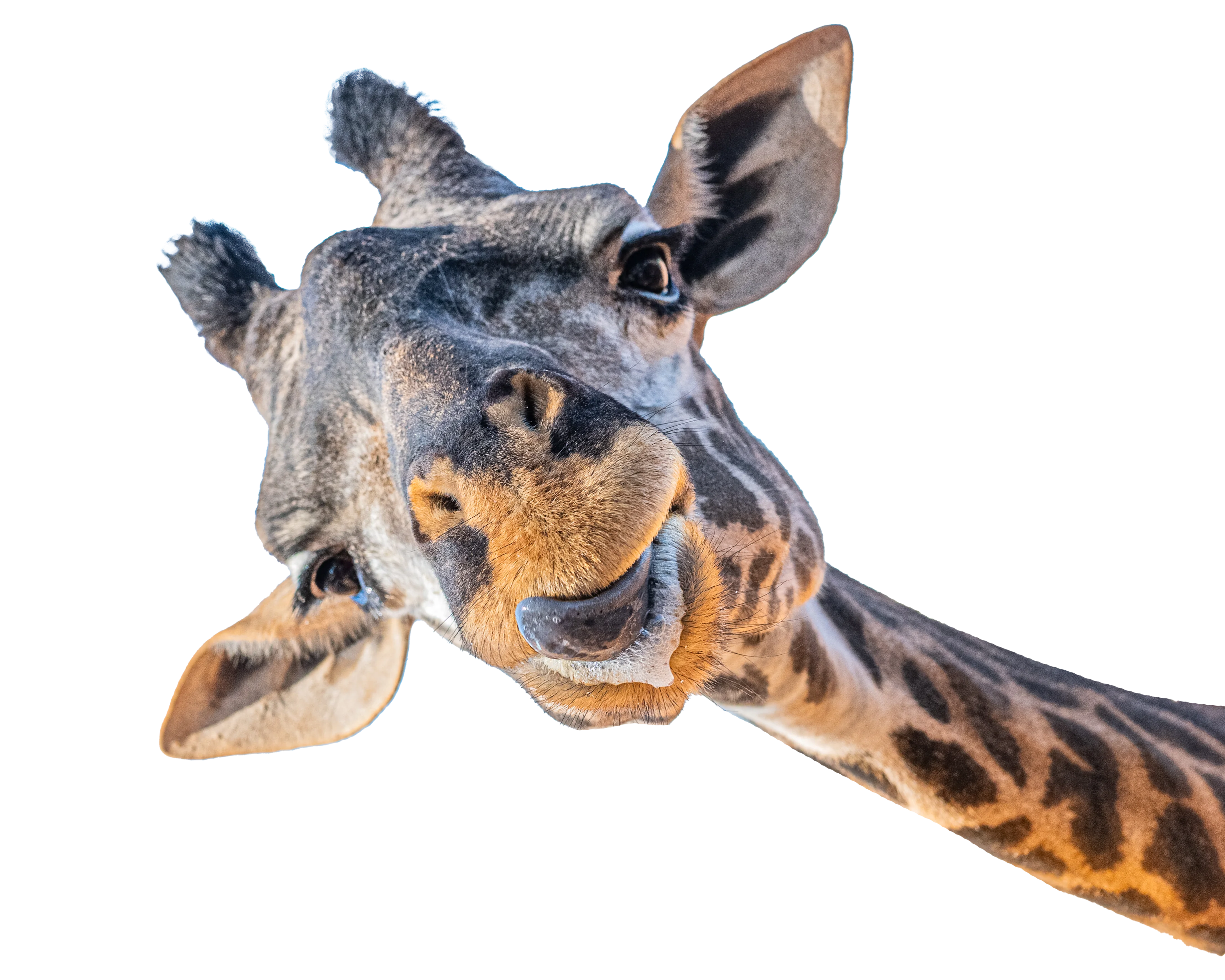
Plan your visit today!
The Phoenix Zoo is one of the largest non-profit zoos in the U.S., caring for over 3,000 animals, with nearly 400 species represented, including many threatened/endangered species.
